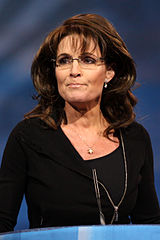Atlas Shrugged: Part 1, The Movie
After that last year of plowing through Ayn Rand’s verbiage, it’s about time for a palate cleanser. And I have just the thing: the colossal cinematic wreck that is Atlas Shrugged: Part 1. Feast your eyes on the capitalist glory of the trailer:
The film was released in 2011, funded mainly by rich white guy John Aglialoro, the CEO of exercise equipment company Cybex. In spite of what would seem to be a built-in audience who’d pay to see it no matter how terrible it was, it promptly sank without a trace, making back less than a quarter of its $20 million budget.
As to why it failed, I have some theories which we’ll get to later on. However, it probably didn’t help that 100,000 DVD copies had to be recalled after some feckless copywriter described it on the title sheet as a “timeless novel of courage and self-sacrifice”. (He’s not getting into Galt’s Gulch, I’ll tell you that much.)
But before we get into that, there’s one significant way that the movie departs from the book, and I think it’s an improvement.
In the opening scene, we’re told by a title card that the date is September 2, 2016. Via a montage of news clips and voiceovers, we find that “the Mideast has imploded”, cutting off all oil imports, crippling the economy and sending the price of gas to $37.50 a gallon. In the throes of a massive economic depression (represented by stock footage of Wall Street brokers looking harried), railroads have reemerged as the most affordable means of travel, even as the government tries to contain the damage by instituting price controls and passing laws to make layoffs illegal.
This is one thing, surprisingly, the movie gets right. I appreciate that the filmmakers at least tried to explain why the economy is collapsing, something the book never does. (In real life, the U.S.’ biggest source of imported oil is Canada, but the film ignores that; it would hardly fit their message for us to be rescued by the land of socialized healthcare.)

The real-life Ellis Wyatt?
You’d think that an oil shortage would be an excellent motivation for the U.S. to launch a major effort to switch to renewable energy sources, but that doesn’t happen here. In the world of Ayn Rand, there’s no such thing as solar, wind or hydroelectric power. The words “alternative energy” never so much as cross anyone’s lips in this movie. Instead, we get an opening scene in a diner, where oil baron Ellis Wyatt is on TV insisting that we have plenty of oil and gas right here at home, if only the damn government would get out of the way and let him get at it.
If this sounds familiar, it’s because it’s basically the slogan of the 2008 Republican presidential campaign. In a previous comment thread, Alex SL coined the term “cornucopianism” for this attitude: the belief that conservation is unnecessary because there will always be more natural resources for us to exploit. For Rand, as for the GOP, this isn’t a factual conclusion but an article of dogma, because accepting that scarcity exists would force them to confront hard questions about sustainability and equitable distribution.
Strangely, the renewable sources that are actually closest to limitlessness are the ones they dismiss or ignore. (You may remember the Rand devotee in earlier comment threads who thought a perpetual motion machine was wholly plausible but scoffed at solar power as a fanciful pipe dream. For the record, the world currently has around 100 gigawatts of solar generating capacity.)
I wonder if this has anything to do with the fact that renewables can’t easily be wrapped up in a deed and controlled by a handful of rich people the way that oil and gas can. Solar energy, which is inherently decentralized and free for the taking, may well strike an Objectivist as suspiciously democratic, even communist. What good is a power source that can’t be yanked away at the whim of a wealthy landowner who decides he isn’t being appreciated enough?
There are some other assorted oddities as well, like that date in the opening scene. Rand avoided any mention of dates to give her book a sense of timelessness, but the filmmakers went the other direction, giving the movie not just a date of planned obsolescence but one that’s a remarkably short time from now. In fact – and there’s no way this wasn’t deliberate – it sets the opening scene within a few weeks of a presidential election, and that election must happen sometime during the movie. Yet we never hear about it, not even who the candidates were. I can’t help but wonder if that was meant to put the fear of President Hillary Clinton in the audience without coming out and saying so.
Image by Gage Skidmore, released under CC BY-SA 2.0 license; via Wikimedia Commons
Other posts in this series: